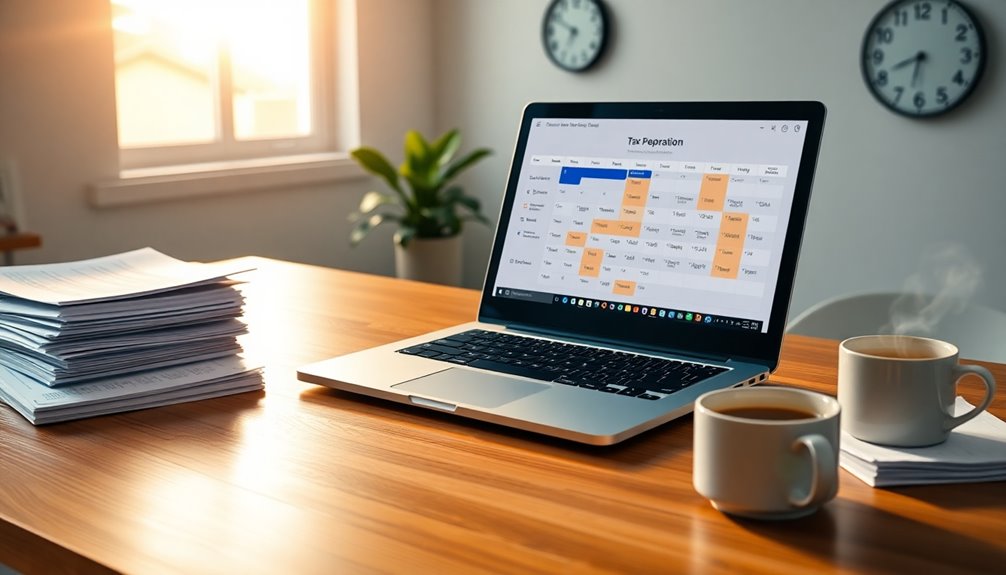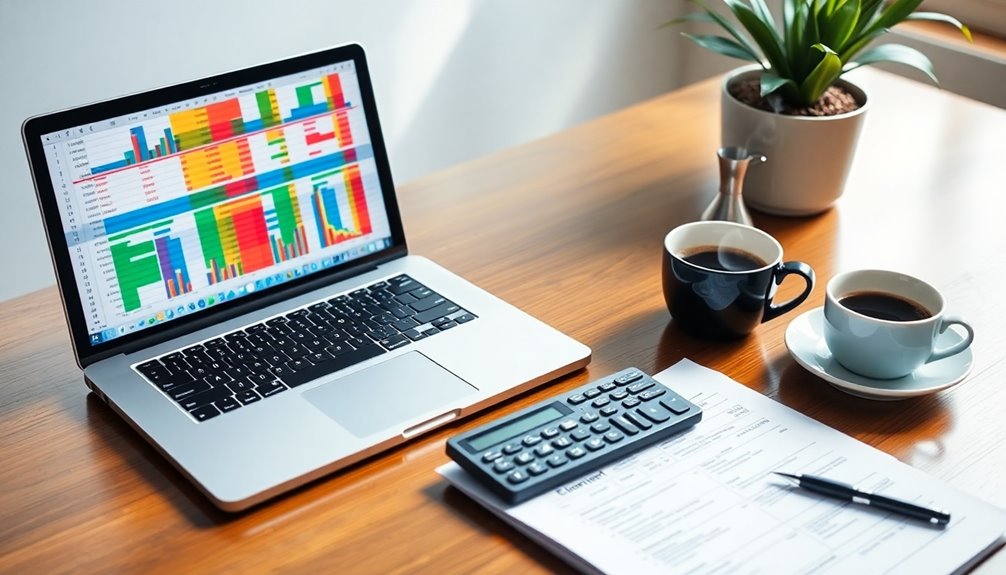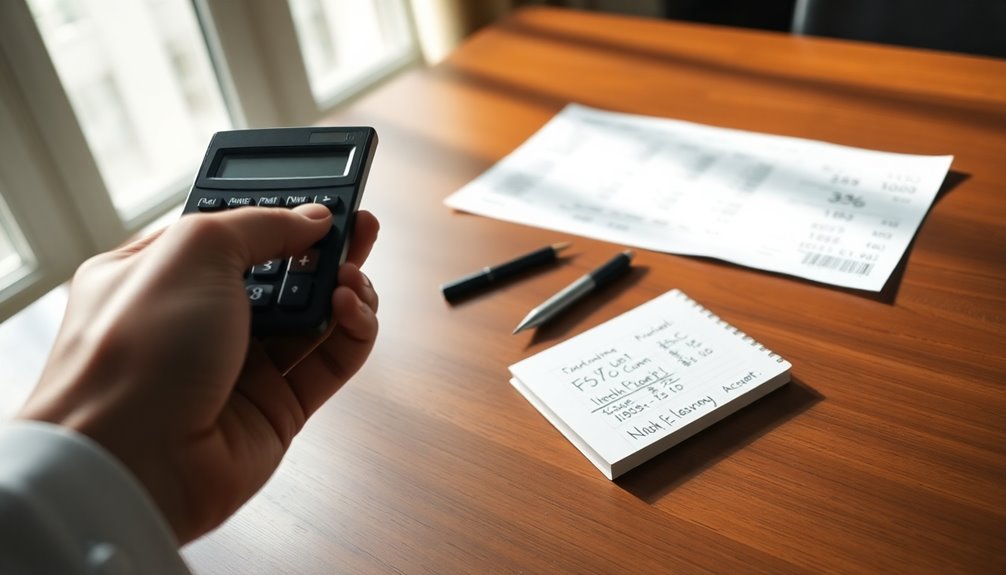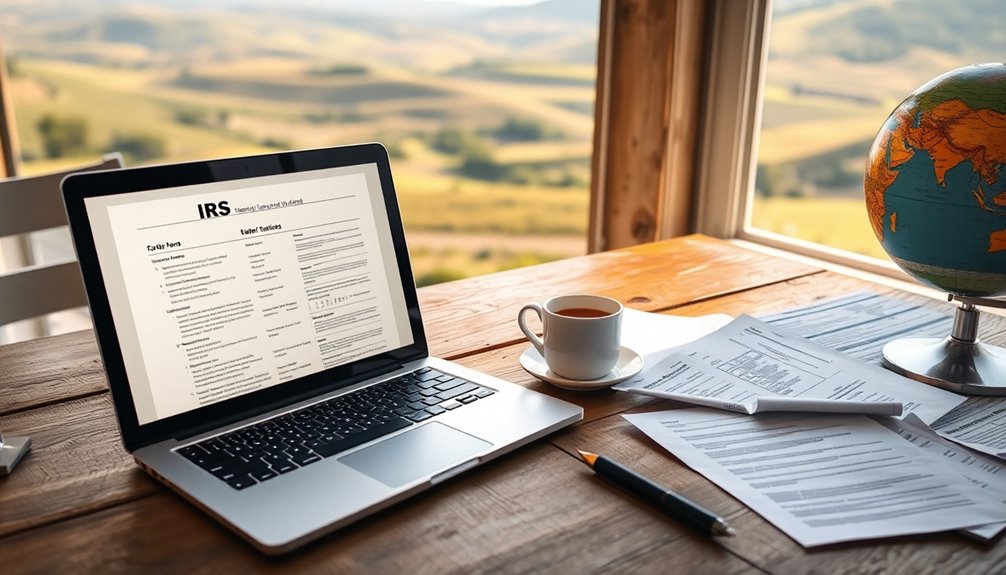You can get your stimulus check without filing taxes by using the IRS Non-Filer Tool. This tool helps eligible individuals, like those receiving government benefits, submit their essential information, such as your name and bank details, to qualify. If you're low-income, you might also opt to file a simplified tax return. Remember, if you're claimed as a dependent by someone else, you won't qualify. Once you complete the process, you can check your payment status online too. For more detailed options and support, there are resources available that can guide you further.
Key Takeaways
- Use the IRS Non-Filer Tool to provide essential information for claiming your stimulus payment without filing a tax return.
- Ensure you have a valid Social Security number and meet income eligibility requirements to qualify for the payment.
- Include qualifying children to increase your payment by an additional $500 per child when using the Non-Filer Tool.
- Check payment status using the IRS "Get My Payment" tool after submitting your information to track your stimulus check.
- Seek assistance from community organizations or VITA sites for support with the Non-Filer Tool and eligibility verification.
Eligibility for Automatic Payments

When it comes to receiving automatic payments, understanding your eligibility is crucial. To qualify, you must be a U.S. citizen or resident alien for 2020 and hold a valid Social Security number for employment. If someone can claim you as a dependent, you won't be eligible for these payments.
Your adjusted gross income also needs to meet specific limits—less than $12,200 for single filers and under $24,400 for married couples in 2019. If you haven't filed a tax return for 2018 or 2019, you may still qualify by using alternative methods. Non-filers receiving government benefits like Social Security retirement, disability, or survivor benefits are automatically eligible for payments without any additional action needed.
If you're already receiving benefits like Social Security retirement, disability, or survivor benefits, you're automatically eligible for payments without any additional action needed. This also applies to those with Railroad Retirement benefits, Supplemental Security Income (SSI), or veterans receiving pension and disability benefits.
Your payments will arrive in the same way you currently receive your benefits, whether that's through direct deposit or a paper check. Ensuring you meet these criteria can lead to a seamless process for receiving your stimulus payment without having to file a tax return.
Using the IRS Non-Filer Tool
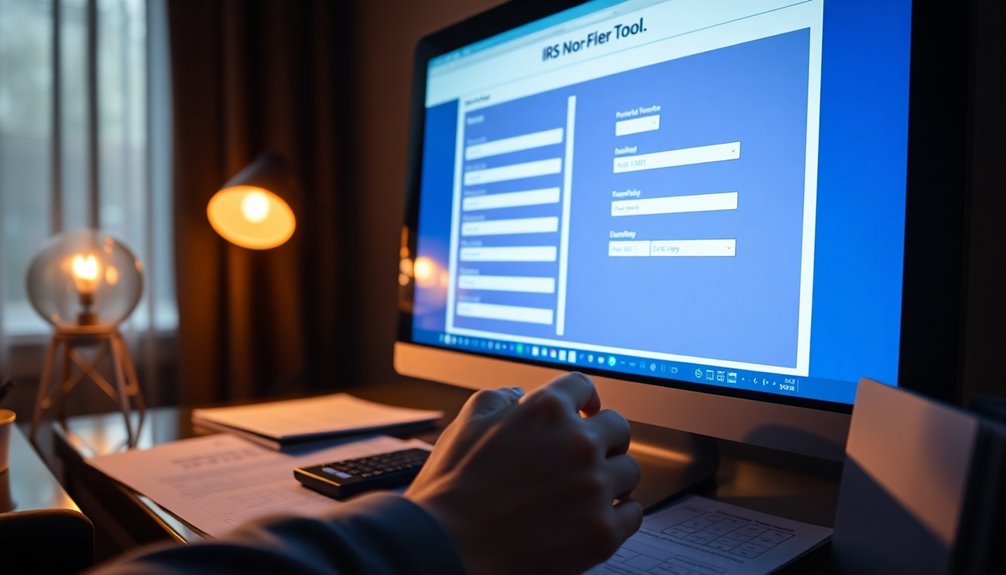
The IRS Non-Filer Tool offers a straightforward way for individuals who aren't required to file a tax return to claim their Economic Impact Payments. To access it, visit IRS.gov and click on the "Non-Filers: Enter Payment Info Here" button.
This tool is specifically designed for those who didn't file a tax return in 2018 or 2019, including homeless individuals and those with incomes below $24,400 for married couples or $12,200 for singles.
When using the tool, you'll need to provide some essential information: your full name, Social Security number (and those for your spouse and dependents), mailing address, and bank account details for direct deposit. Approximately 12 million Americans may be eligible but lack information to claim funds.
If you have qualifying children, include their information to receive additional payments, which can be up to $1,200, plus $500 for each qualifying child.
The Non-Filer Tool confirms your eligibility, calculates your payment, and sends it directly to your bank account if you provide that info. If not, payments will be mailed.
Completing the process typically takes only a few minutes, making it easy for you to secure your stimulus check.
Filing Simplified Tax Returns
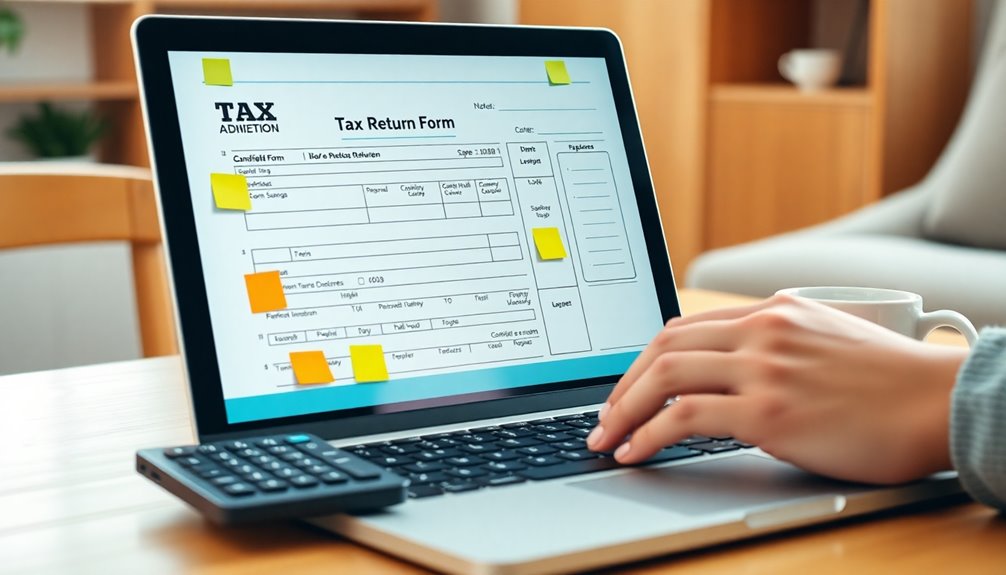
For those who still need to file a tax return but aren't required to do so due to low income, simplified tax returns provide a quick and effective way to claim your Economic Impact Payment. If your income was below the filing threshold—$12,200 for single filers or $24,400 for married couples in 2019—you can use this streamlined process. Additionally, consider filing even if not required, as it may lead to potential refunds.
To get started, gather your basic information: name, address, Social Security number, and details about your filing and dependency status. If you have dependents under 17, include their information as well. You'll also need your banking details for direct deposit, if applicable.
When filling out the form, write "EIP2020" at the top. Enter $1 on Lines 2b, 7b, and 8b, and include the standard deduction amount on Line 9 if you're filing electronically.
Don't forget to leave Column 4 in the dependent section blank and leave other lines empty unless specified.
You can file electronically or mail a paper return, but make sure to submit it by the deadline to ensure your eligibility for the stimulus payment.
Finally, sign the form under penalties of perjury.
Alternative Support Resources
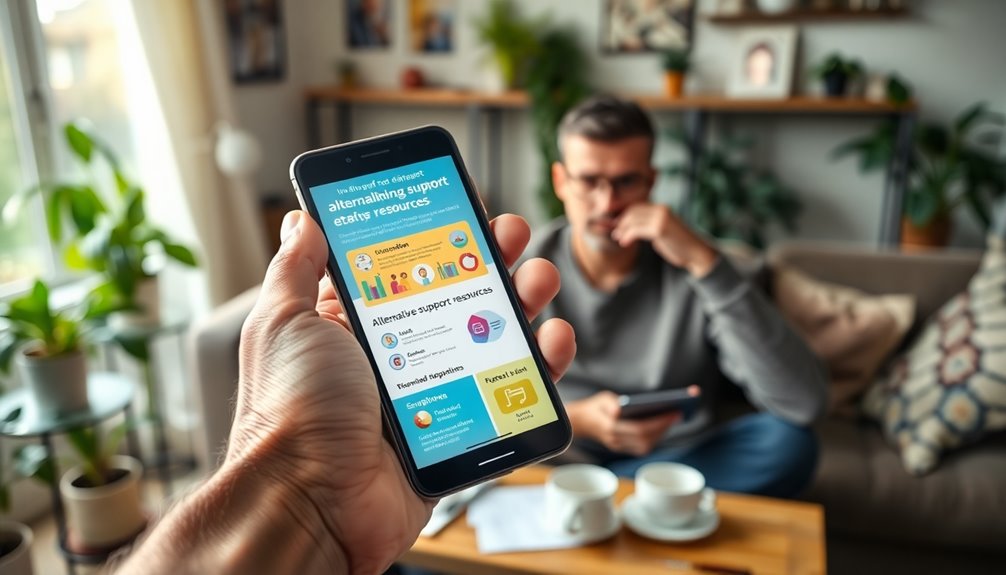
Finding alternative support resources can be crucial if you need assistance obtaining your stimulus check without filing taxes.
Start by using the IRS Non-Filer Tool, which is designed for Americans not required to file a federal income tax return. You'll need to provide your name, address, Social Security number, and filing status. If you wish, you can also input your bank account details for direct deposit.
If you receive benefits like Social Security or Railroad Retirement, you'll automatically receive your stimulus payment without any extra action. Payments are sent using your existing benefit information, either via direct deposit or paper check. Additionally, many individuals may find that filing taxes is necessary to claim any missing payments.
Additionally, consider reaching out to local resources such as United Way or Community Action Agencies. They can connect you with Volunteer Income Tax Assistance (VITA) sites that offer free tax preparation.
Low Income Taxpayer Clinics (LITCs) also provide help and education on tax matters.
Finally, online options like MyFreeTaxes.com and IRS Free File can assist you with free tax filing. For in-person help, some H&R Block offices may offer support for Economic Impact Payments, so don't hesitate to ask about their services.
Understanding Payment Amounts
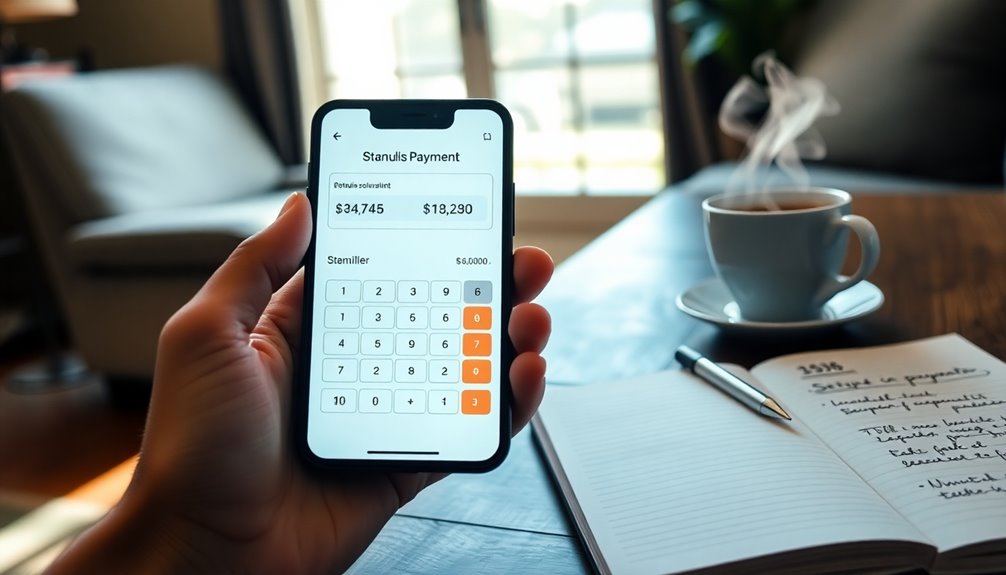
Understanding how much you can expect from your stimulus check is essential for financial planning. The maximum payment is up to $1,200 for individuals and $2,400 for married couples. If you have qualifying children under 17, you could receive an additional $500 for each child.
However, keep in mind that your adjusted gross income must fall below certain limits—generally under $12,200 for single filers and $24,400 for married couples—to qualify. To receive your payment, you mustn't be claimed as a dependent by another taxpayer, and you need to be a U.S. citizen, permanent resident, or qualifying resident alien. If you meet these criteria, you can use the IRS "Non-Filers: Enter Payment Info Here" tool to provide your information and claim your stimulus payment. Additionally, the IRS is currently distributing approximately $2.4 billion to taxpayers who may have overlooked claiming the Recovery Rebate Credit.
Payments are typically processed through direct deposit if you provide your bank account details, or you can opt for a paper check. If you receive government benefits like Social Security or SSI, check your payment method, as these payments may be sent automatically.
Deadlines for Stimulus Claims
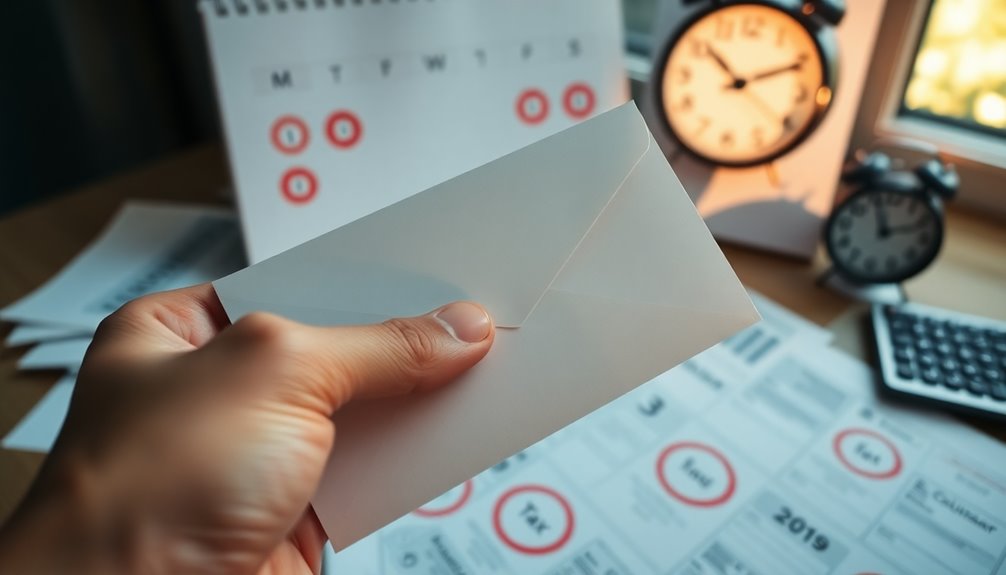
Navigating the deadlines for stimulus claims is crucial to ensure you don't miss out on your payment. For the 2020 stimulus claims, you have until May 17, 2024, to file your tax returns. Remember, the eligibility window extends three years from the original deadline of May 17, 2021.
If you didn't file taxes, there's no specific deadline for using the IRS's online tool, but ensure you filed by October 15, 2020, to receive your payment by the end of 2020. Additionally, the Recovery Rebate Credit allows those who may have missed payments to claim the full amount when they file.
For the 2021 stimulus claims, the filing deadline is April 15, 2025. Eligible taxpayers will automatically receive payments by late January 2025 if they qualify.
If you missed claiming the credit on your original return, you can submit an amended return using Form 1040-X. The IRS will notify eligible taxpayers about special payments, which will be issued in December 2024 or January 2025.
If you receive government benefits like Social Security, no action is needed to receive your stimulus check. Make sure to stay updated on these deadlines to secure your payments!
Checking Payment Status
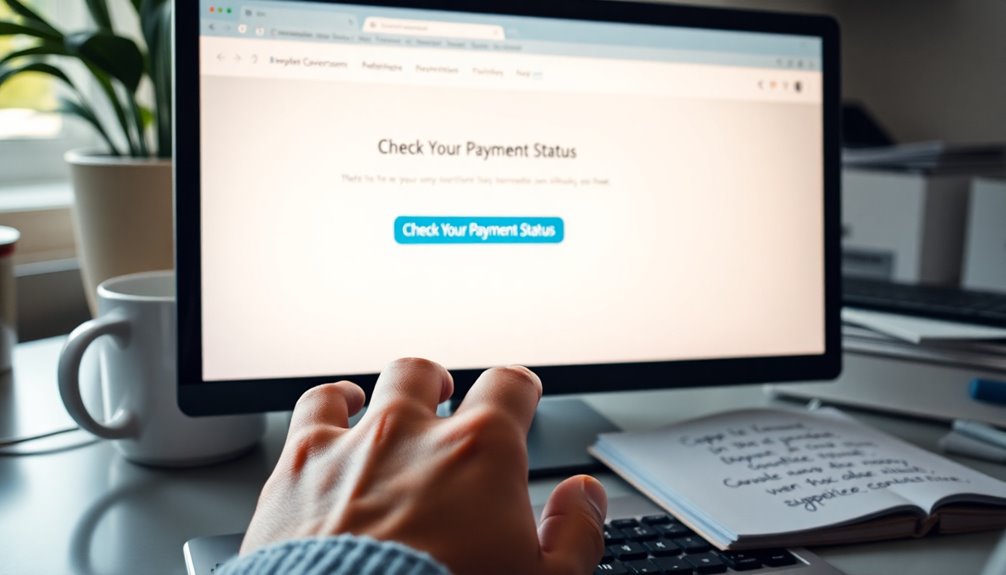
To check the status of your stimulus payment, you can use the IRS's Get My Payment tool. Simply access the tool at IRS.gov and enter your Social Security number or individual tax ID number, your date of birth, and your mailing address. It's important to remember that your SSN must be valid for employment to ensure eligibility for the payment. This tool updates your account information once per day overnight, so you should wait at least two weeks after submission to check your payment status.
If you see "Payment Status Not Available," it means your payment hasn't been scheduled yet. Make sure to limit your checks to once per day; checking more often could lead to a temporary account lockout.
If you enter incorrect information three times within 24 hours, your account will lock for 24 hours for security reasons. To avoid these issues, ensure all your information matches IRS records.
If you need further assistance, you can find FAQs on the IRS website or contact local resources like VITA for help. Remember, you don't need to contact the IRS for lockout assistance, as the lockout will automatically release after 24 hours.
Claiming Recovery Rebate Credit

If you're looking to claim the Recovery Rebate Credit, you'll need to ensure you meet specific eligibility criteria. First, you must be a U.S. citizen or resident alien for 2020 and/or 2021 and not claimed as a dependent on someone else's tax return.
You'll also need a valid Social Security number for employment and meet the income thresholds for either a full or reduced stimulus payment. If your financial situation has changed since the initial payments, you could still be eligible. It's important to note that the Recovery Rebate Credit functions as a refundable tax credit which allows eligible taxpayers to recoup funds they may have missed during the pandemic.
To claim the credit, file a U.S. tax return for the corresponding year when the Economic Impact Payment was sent out. Use Line 30 of Form 1040 or Form 1040-SR to calculate your Recovery Rebate Credit, including amounts for any dependents.
Adjust your credit based on your adjusted gross income (AGI). Keep in mind, you can be eligible even if you didn't file a tax return previously. If your AGI in 2021 dropped below the phase-out threshold, or if you received Social Security or veterans benefits while caring for a dependent child, you may qualify.
Assistance From Community Organizations

Many individuals may not realize that community organizations offer vital assistance in accessing stimulus checks, especially for those who haven't filed taxes. These organizations often partner with disability advocates and utilize resources like the IRS's "Non-Filers: Enter Your Payment Info Here" tool.
If you're receiving benefits like Social Security or SSI, you may still be eligible for a stimulus check. Stimulus funds can also be deposited into ABLE accounts, providing additional benefits for individuals with disabilities.
Local organizations are key in providing outreach and education. They develop guides and memos that explain how to access and use stimulus checks, particularly for ABLE accounts. By collaborating with members of the National Disability Rights Network, these groups focus on promoting financial wellness and future planning for individuals with disabilities.
You can also find state-specific resources to help you navigate the process, and many organizations offer assistance in multiple languages.
Don't hesitate to reach out to your local community centers, homeless shelters, or legal aid clinics. They can provide guidance on maintaining eligibility for federal benefits while accessing your stimulus check.
Common Mistakes to Avoid

Accessing your stimulus check can be straightforward, but common mistakes can derail the process. One significant error is using the "Non-Filers" tool when you've already filed a 2018 or 2019 tax return.
Make sure you provide accurate banking information for direct deposit; incorrect or incomplete details can delay your payment. If you're filing a simplified return, don't forget to include "EIP2020" and leave specified lines blank as instructed.
Inaccurate or missing information can also pose problems. Double-check that your Social Security number is correct and that you include dependency details if applicable. It's important to remember that recipients of Social Security and SSI are typically exempt from filing tax returns, which can influence your eligibility for the stimulus payment.
Keep your address updated and avoid missing deadlines for filing. Avoid incorrect filing methods, like trying to e-file a state return without a federal return. Always follow IRS instructions precisely and use the correct forms.
Lastly, ensure you meet the eligibility criteria. If you're claimed as a dependent or lack a valid Social Security number, you won't qualify.
Review your income to see if you need to file for the stimulus even if you're above the typical threshold. Avoiding these mistakes can help you secure your stimulus check smoothly.
Frequently Asked Questions
Will I Receive a Stimulus Check if I Owe Taxes?
If you owe taxes, you'll still receive a stimulus check. The IRS won't use your stimulus payment to offset federal or state tax debts, so you don't need to worry.
However, if you owe past-due child support, the IRS might intercept your payment. Otherwise, your eligibility for the check remains unaffected by tax debts.
Just ensure you meet the other requirements, like having a valid Social Security number and not being claimed as a dependent.
Can I Receive My Stimulus Payment via Prepaid Debit Card?
Yes, you can receive your stimulus payment via a prepaid debit card.
If the IRS doesn't have your bank account information, they'll send your payment on a card labeled "Money Network Cardholder Services."
Make sure to check your mail carefully, as the card comes in an official envelope.
You'll need to activate it by calling the designated number and creating a PIN for transactions.
Once activated, you can use it anywhere Visa is accepted.
Are Undocumented Immigrants Eligible for Stimulus Checks?
No, undocumented immigrants aren't eligible for stimulus checks.
Since you need a valid Social Security number to receive aid, many working undocumented individuals miss out, even if they pay taxes. This exclusion affects around 7 million people, leaving them to rely on advocacy groups for assistance.
If you're part of a mixed-status family, eligibility can get complicated, but generally, undocumented immigrants can't access these payments.
How Will My Stimulus Payment Affect My Government Benefits?
Your stimulus payment won't count as income for programs like Medicaid, SSI, or SNAP, so it won't affect your eligibility for these benefits.
You can spend or transfer the funds within 12 months without any impact.
To preserve the funds beyond that period, consider using a supplemental needs trust or an ABLE account if you're disabled before age 26.
This way, you can maximize your financial resources while maintaining your benefits.
What Happens if I Move Before Receiving My Payment?
If you move before receiving your payment, it's crucial to update your address with the IRS.
They'll send your stimulus payment to the address they've on file. If you haven't notified them of your move, your payment might go to your old address, causing delays.
Make sure to file Form 8822 to ensure your new address is recorded.
This way, you'll receive your payment at your current location without any issues.
Conclusion
In conclusion, if you're eligible for a stimulus check but haven't filed taxes, don't worry—you've got options. Whether you use the IRS Non-Filer Tool or consider simplified tax returns, you can secure your payment. Remember to check your payment status and explore community resources for additional help. Avoid common mistakes to ensure you receive what you deserve. Take action now, and you'll be on your way to getting that stimulus check!


